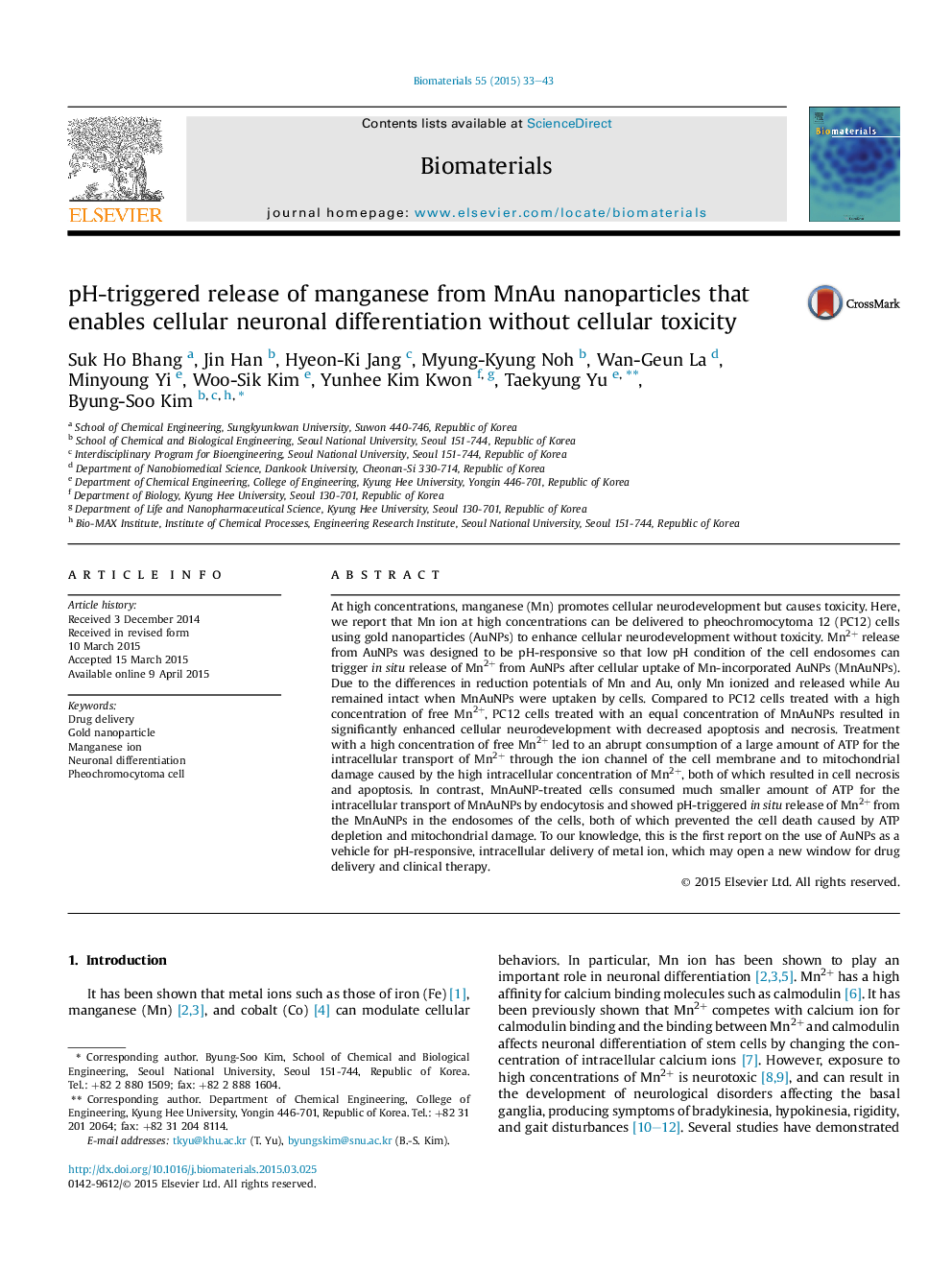| Article ID | Journal | Published Year | Pages | File Type |
|---|---|---|---|---|
| 5659 | Biomaterials | 2015 | 11 Pages |
At high concentrations, manganese (Mn) promotes cellular neurodevelopment but causes toxicity. Here, we report that Mn ion at high concentrations can be delivered to pheochromocytoma 12 (PC12) cells using gold nanoparticles (AuNPs) to enhance cellular neurodevelopment without toxicity. Mn2+ release from AuNPs was designed to be pH-responsive so that low pH condition of the cell endosomes can trigger in situ release of Mn2+ from AuNPs after cellular uptake of Mn-incorporated AuNPs (MnAuNPs). Due to the differences in reduction potentials of Mn and Au, only Mn ionized and released while Au remained intact when MnAuNPs were uptaken by cells. Compared to PC12 cells treated with a high concentration of free Mn2+, PC12 cells treated with an equal concentration of MnAuNPs resulted in significantly enhanced cellular neurodevelopment with decreased apoptosis and necrosis. Treatment with a high concentration of free Mn2+ led to an abrupt consumption of a large amount of ATP for the intracellular transport of Mn2+ through the ion channel of the cell membrane and to mitochondrial damage caused by the high intracellular concentration of Mn2+, both of which resulted in cell necrosis and apoptosis. In contrast, MnAuNP-treated cells consumed much smaller amount of ATP for the intracellular transport of MnAuNPs by endocytosis and showed pH-triggered in situ release of Mn2+ from the MnAuNPs in the endosomes of the cells, both of which prevented the cell death caused by ATP depletion and mitochondrial damage. To our knowledge, this is the first report on the use of AuNPs as a vehicle for pH-responsive, intracellular delivery of metal ion, which may open a new window for drug delivery and clinical therapy.
